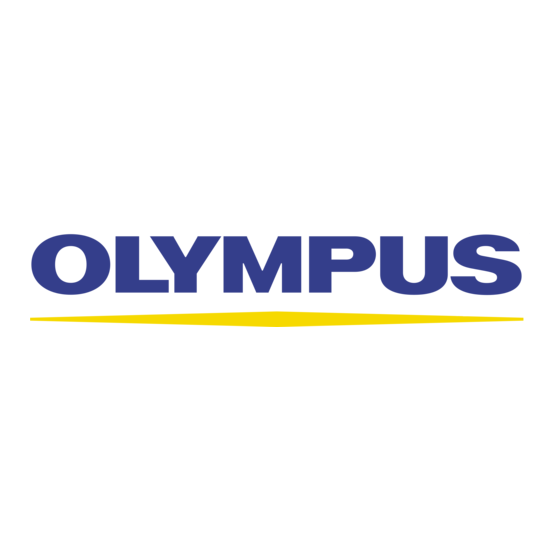Olympus Fluoview-1000 Panduan Pengguna - Halaman 27
Jelajahi secara online atau unduh pdf Panduan Pengguna untuk Mikroskop Olympus Fluoview-1000. Olympus Fluoview-1000 50 halaman.

V.M. Bloedel Hearing Research Center, Core for Communication Research
Center on Human Development and Disability, Digital Microscopy Center
1. Open the OIF format by choosing the "filename.oif", not the "filename.oif.files" directory.
2. The OIF format is compatible with spooling files during acquisition of large files >800 Mb.
3. If software is not available to recognize the OIF format, the filename.oif.files folder can be
opened and the individual TIFF files imported to view your images.
5.1.3 Where are Your Files on the Confocal?
1. Double-click on "My Computer";
2. Navigate to directory "My Computer/Data(D:)/FV10-ASW/Users/Username/Image";
3. A shortcut for User Files exists on the desktop.
5.2
Export file types.
Any open file may be exported as a TIFF, JPEG or PNG, but this converts images to 8-bits. Conversion
to 8-bits is usually sufficient for presentation, but is not recommended for images intended for
deconvolution, quantification, or any image processing operations such as background subtraction,
feature recognition, etc. Saving files that have been converted to 8-bits does not constitute archival of
primary data. Do not use 24-bit RGB tiff as an archival format, since each channel is scaled to 8-bits.
5.2.1 Add a scale bar to your file
You may add a scale to your file and then export as a TIFF to have the scale bar show up in ImageJ or
Photoshop. However, this means saving your file under yet another format. Adding scale bars in
ImageJ or Photoshop is simple and directions can be found on our website in the section on image
processing software.
1. View the image in Fluoview;
2. Click on the Pencil icon, left of the image window, to get a palette of editing tools;
3. Select the Ruler icon near the bottom of the tools palette;
4. Draw the desired scale bar on your image (hold down the Shift key to obtain lines at 45°
increments);
5. Select 'Export' from the File menu;
6. Select the file format, e.g. "TIFF";
7. Select the option button for "Selected overlay";
8. Click on the ruler icon;
9. Now export this version of the image.
Again, this is unnecessary if you are using ImageJ, Photoshop, Huygens, Image Pro, etc.
5.3
Opening your Files.
Some commercial software applications will open the Olympus .oib and .oif formats, e.g. Imaris,
Slidebook and Fluoview. The Huygens software will only open the .oif format. Any image processing
application can import the tiff files found in the .oif format. See the document on importing Olympus
files on our website, http://cajal.oto.washington.edu/corec/imageprocessing.php.
May 11, 2011
Olympus Fluoview-1000 User's Guide
27
